Top 10 Foods Highest in Lysine
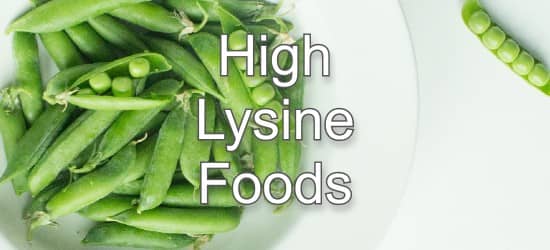
Lysine is an essential amino acid involved in the creation of collagen (1) and retention of calcium. (2)
Lysine may also help alleviate herpes simplex infections, and reduce the recurrence of cold sores. This is especially true when the ratio of lysine to argnine is high. Excess amounts of the amino acid arginine antagonizes (blocks) the effects of lysine on the body, and can create a lysine deficiency. Furthermore, lysine needs adequate amounts of vitamin B1, B2, B6, vitamin C, glutamic acid, and iron to be absorbed. (2). For more see the list of foods highest in lysine and lowest in argnine.
A deficiency of lysine can lead to tiredness, inability to concentrate, irritability, bloodshot eyes, retarded growth, hair loss, anemia and reproductive problems. (2,3) Further, low lysine levels have been found in people with Parkinson's, hypothyroidism, kidney disease, asthma, and depression. (2)
High lysine foods include lean beef, chicken, pork, fish, shellfish, tofu, cheese, milk, beans, lentils, and peas. The reference dietary intake (RDI) for lysine is 30mg per kilogram of body weight or 13.6mg per pound. A person weighing 70kg (~154 pounds) should consume around 2100mg of lysine per day. (5)
Below is a list of the top 10 foods highest in lysine with the %RDI calculated for someone weighting 70kg (154lbs). For more high lysine foods see the extended list of lysine-rich foods.
-
 1. Beef (Skirt Steak)
1. Beef (Skirt Steak)
Lysine
per 6oz SteakLysine
per 100gLysine
per 200 Calories5619mg
(268% RDI)3305mg
(157% RDI)2466mg
(117% RDI)More Red Meat High in Lysine
- 127% RDI in 3oz lamb roast
- 105% RDI per 3oz top round steak
- 105% RDI per 3oz buffalo steak
See all meats high in lysine.
-
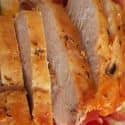 2. Lean Chicken Breast
2. Lean Chicken Breast
Lysine
in a 6oz BreastLysine
per 100gLysine
per 200 Calories5241mg
(250% RDI)3083mg
(147% RDI)3927mg
(187% RDI)More Poultry High in Protein
- 272% RDI in a roasted chicken leg
- 229% RDI in 6oz of ground turkey
- 180% RDI in 6oz of turkey breast
- 154% RDI per cup of light chicken meat
- 136% RDI in a roasted chicken thigh
See all meats high in lysine.
-
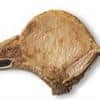 3. Lean Pork Chops
3. Lean Pork Chops
Lysine
in a 6oz ChopLysine
per 100gLysine
per 200 Calories4687mg
(223% RDI)2757mg
(131% RDI)2828mg
(135% RDI)More Pork Products High in Lysine
- 170% RDI per cup of lean ham
- 128% RDI per rack of pork ribs
- 100% RDI in a 3oz pork bratwurst
- 98% RDI per 3oz roast pork tenderloin
- 94% RDI per 3oz of ground pork
See all meats high in lysine.
-
 4. Tuna
4. Tuna
Lysine
in a 6oz FilletLysine
per 100gLysine
per 200 Calories4670mg
(222% RDI)2747mg
(131% RDI)2986mg
(142% RDI)More Fish High in Lysine
- 208% RDI per 6oz salmon fillet
- 187% RDI per 6oz snapper fillet
- 187% RDI per 6oz tilapia fillet
- 180% RDI per 6oz cod fillet
- 177% RDI per 6oz mackerel fillet
See all fish high in lysine.
-
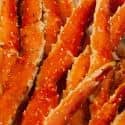 5. King Crab
5. King Crab
Lysine
in 1 Crab LegLysine
per 100gLysine
per 200 Calories2257mg
(107% RDI)1684mg
(80% RDI)3472mg
(165% RDI)More Shellfish High in Lysine
- 173% RDI in 20 small clams
- 118% RDI per dungeness crab
- 93% RDI per 3oz of lobster
- 90% RDI per 3oz of octopus
- 88% RDI per 3oz of shrimp
See all fish high in lysine.
-
 6. Firm Tofu
6. Firm Tofu
Lysine
per CupLysine
per 100gLysine
per 200 Calories2225mg
(106% RDI)883mg
(42% RDI)1226mg
(58% RDI)More Soy Products High in Lysine
- 91% RDI per cup of boiled soybeans (edamame)
- 35% RDI per 1 oz handful of dry roasted soybeans
- 18% RDI per tblsp of soy protein powder
- 15% RDI per cup of soymilk
-
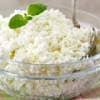 7. Low-Fat Ricotta Cheese
7. Low-Fat Ricotta Cheese
Lysine
per 1/2 CupLysine
per 100gLysine
per 200 Calories1678mg
(80% RDI)1353mg
(64% RDI)1961mg
(93% RDI)More Cheese High in Lysine
- 45% RDI per oz of grated parmesan
- 40% RDI per oz of romano
- 37% RDI per oz of gruyere
- 36% RDI per oz of gouda
- 36% RDI per oz of provolone
-
 8. Milk
8. Milk
Lysine
per 16oz GlassLysine
per 100gLysine
per 200 Calories1382mg
(66% RDI)282mg
(13% RDI)1659mg
(79% RDI)- 60% RDI per cup of non-fat yogurt
See all dairy products high in lysine.
-
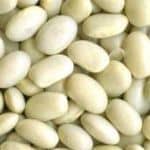 9. Canned Navy Beans
9. Canned Navy Beans
Lysine
per CupLysine
per 100gLysine
per 200 Calories1381mg
(66% RDI)527mg
(25% RDI)933mg
(44% RDI)Other Beans and Lentils High in Lysine
- 57% RDI per cup of white beans
- 56% RDI per cup of split peas
- 55% RDI per cup of red kidney beans
- 51% RDI per cup of pinto beans
- 50% RDI per cup of black beans
See all beans and lentils high in lysine.
-
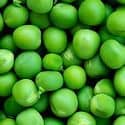 10. Green Peas
10. Green Peas
Lysine
per Cup CookedLysine
per 100gLysine
per 200 Calories502mg
(24% RDI)314mg
(15% RDI)748mg
(36% RDI)Other Vegetables High in Lysine
- 16% RDI per cup of cooked spinach
- 12 RDI per cup of sweet potatoes
- 10% RDI per cup of mushrooms
See all vegetables high in lysine.
Printable One Page Sheet
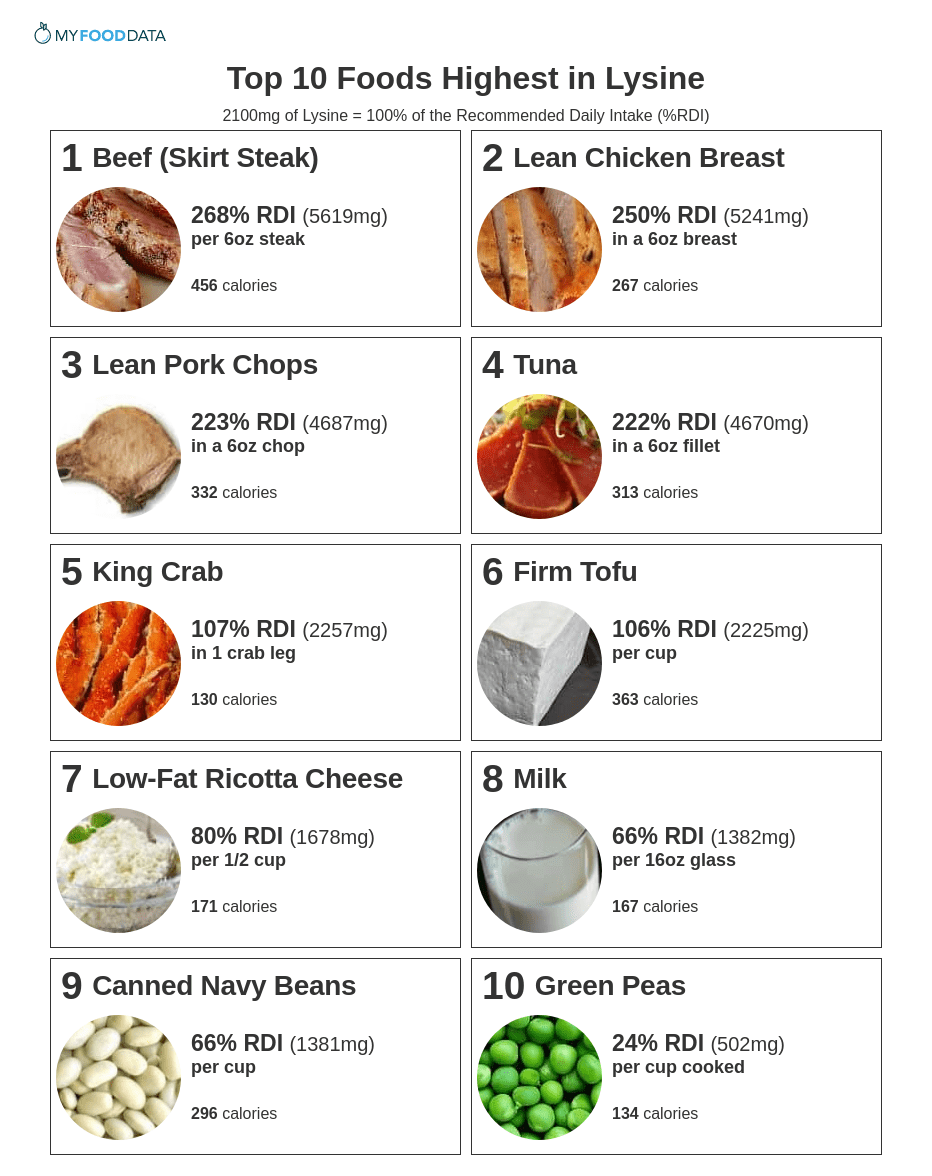
More Lysine Rich Foods
| Food | Serving | Lysine |
|---|---|---|
| 1. Soybean Sprouts | 1 cup | 25% RDI (526mg) |
| 2. Toasted Wheat Germ | per oz | 25% RDI (525mg) |
| 3. Eggs | in 1 large egg | 22% RDI (452mg) |
| 4. Quinoa | per cup | 21% RDI (442mg) |
| 5. Squash and Pumpkin Seeds | per 1 oz handful | 19% RDI (394mg) |
| 6. Hemp Seeds | per oz | 17% RDI (362mg) |
| 7. Oatmeal | per cup | 15% RDI (316mg) |
| 8. Brussels Sprouts | per cup cooked | 9% RDI (181mg) |
| 9. Brown Rice | per cup | 8% RDI (172mg) |
| 10. Almonds | per 1oz handful | 8% RDI (161mg) |
Foods Highest in Lysine and Lowest in Arginine
| Food | Serving | Lysine | Arginine |
|---|---|---|---|
| 1. Farmed Atlantic Salmon | per 6oz fillet | 3451mg | 2247mg |
| 2. Milk | 16oz glass | 1382mg | 470mg |
| 3. Yogurt | 1 cup | 762mg | 255mg |
| 4. Swiss Cheese | 1 oz | 734mg | 263mg |
| 5. Cauliflower | 1 cup chopped | 232mg | 92mg |
| 6. Cremini Mushrooms | 1 cup whole | 219mg | 107mg |
| 7. Apricots | 1 cup halves | 150mg | 70mg |
| 8. Mangos | 1 cup pieces | 109mg | 51mg |
| 9. Starfruit (Carambola) | 1 cup sliced | 83mg | 23mg |
| 10. Papaya | 1 cup pieces | 36mg | 15mg |
About the Data
Data for the curated food lists comes from the USDA Food Data Central Repository.
You can check our data against the USDA by clicking the (Source) link at the bottom of each food listing.
Note: When checking data please be sure the serving sizes are the same. In the rare case you find any difference, please contact us and we will fix it right away.
About Nutrient Targets
Setting targets can provide a guide to healthy eating.
Some of the most popular targets include:- Daily Value (%DV) - The daily value (%DV) is a general guideline for consumption that will prevent deficiency of a particular nutrient in most people. The %DV refers to the percentage of an amount that\'s found in a single serving of a food. It also accounts for absorption factors. It is set by the U.S. FDA.
- Recommended Dietary Allowance (%RDA) - The RDA sets an average daily dietary intake level that is sufficient to meet the nutrient requirements of nearly all (97.5%) healthy individuals. It\'s more specific than the daily value, and varies by age and gender. The RDA is set by the US National Institutes of Health.
- Reference Dietary Intake (%RDI) -The reference dietary intake is similar to the recommended daily allowance, but is specific to age and gender. The RDI for amino acids is set by the U.N. World Health Organization.
- Adequate Intake (%AI) - This value is primarily used in reference to omega-3 and omega-6 fats. The Adequate Intake is set by the U.S. Institute of Medicine. Because there is less evidence to determine the ideal targets for consumption of these nutrients, the specific amount is considered to be less reliable. Using the term Adequate Intake, rather than one of the other terms, helps to emphasize that the ideal intake of that particular nutrient has not yet been scientifically determined.
See the Guide to Recommended Daily Intakes for more information.
Want to set your own targets? Sign up for an account and set custom targets in the daily food log.From the Nutrient Ranking Tool
Use the ranking tool links below to select foods and create your own food list to share or print.
- Foods High in Lysine
- Foods Low in Lysine
- Vegetables High in Lysine
- Fruits High in Lysine
- Vegetarian Foods High in Lysine
- Nuts High in Lysine
- Grains High in Lysine
- Beans High in Lysine
- Dairy High in Lysine
- Breakfast Cereals High in Lysine
- Fast Foods High in Lysine
View more nutrients with the nutrient ranking tool, or see ratios with the nutrient ratio tool.
Related
Data Sources and References
- Collagen Structure and Stability
- PubChem on Lysine
- Canadian Drug Database on L-Lysine
- U.S. Agricultural Research Service Food Data Central
- World Health Organization (WHO) Technical Report Series – Protein And Amino Acid Requirements In Human Nutrition ISBN 978 92 4 120935 9
Try the recipe nutrition calculator, or daily meal planner.
Create a free account to log and track foods.

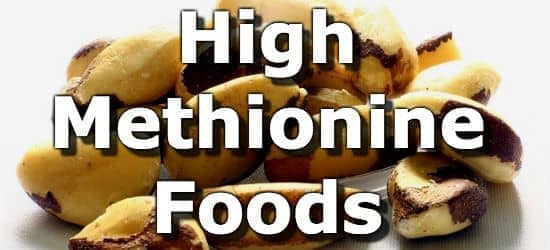 Next ➞
Next ➞